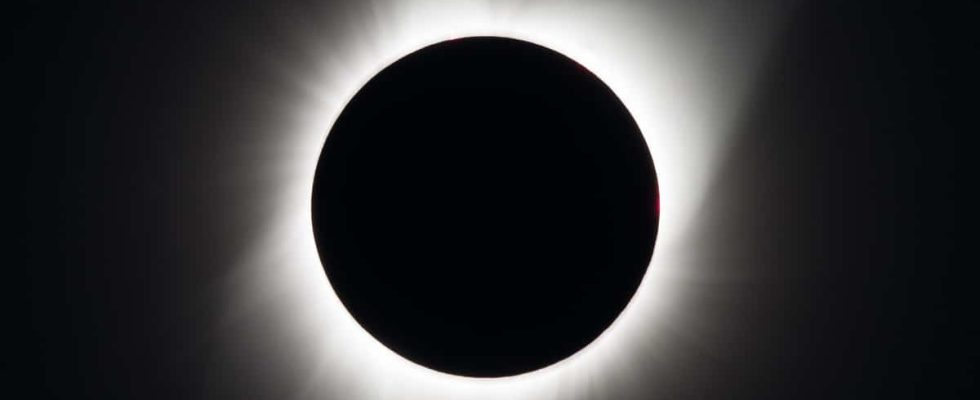It will be in an almost cloudless sky that many Quebecers will be able to observe the famous total solar eclipse at 3:26 p.m. today, a historic event that will have to wait more than 50 years to see again in Quebec.
• Read also: Solar eclipse: a special measure for astronauts
• Read also: Solar eclipse: no worries for pets
• Read also: Several thousand people expected: the City of Saint-Georges is ready for the eclipse
“It’s an event that I’m waiting for [l’éclipse totale] for 40 years. I’ve been mentally preparing for a year,” explains Carl Tremblay, a 54-year-old amateur astronomer from Sainte-Julie.
After decades of waiting, Mr. Tremblay will be surrounded by around twenty amateur astronomers in Saint-Jean-sur-Richelieu to see the Moon align perfectly between the Earth and the Sun.
The show will begin today at 2:14 p.m., with the total eclipse at 3:26 p.m., depending on location.
Like him, in Quebec, some Montrealers, Sherbrooke residents, as well as residents of Lac-Mégantic and Cap-aux-Meules, will have the chance to observe the total eclipse of the Sun, which should no longer happen in the Quebec for at least fifty years.
Indeed, this historic event will not happen again anytime soon in Quebec, since we will have to wait until 2079 to see a total solar eclipse in the province. In Montreal, we will have to wait until 2205 to have a total solar eclipse in the territory.
Good weather
This “rare and spectacular phenomenon,” as NASA describes it, will also cross parts of Ontario, New Brunswick, Prince Edward Island, Nova Scotia and Newfoundland. and Labrador.
The weather will also be good since the sky will be clear in the south of the province and particularly in Estrie, reassures Michèle Fleury, meteorologist at Environment Canada.
- Listen to the interview with Sébastien Giguère, education manager at ASTROLab du Mont-Mégantic, via QUB :
This is what pushed Pierre Arpin, a 76-year-old from Longueuil, to return to Quebec after he had taken the road to Texas, where the weather is supposed to be the best for observing an eclipse at this time of year. ‘year.
“I had arrived in Syracuse, New York, and, consulting the latest weather analyses, I saw that there was no point in continuing any further. I turned around and came back to Longueuil in a snowstorm,” he explains.
Open-air laboratory
In Montreal, at the Sainte-Bernadette-Soubirous primary school, motivated daycare educators are preparing to receive several hundred people in the courtyard, explains Philippe Desmarais.
“We want to arouse curiosity and the desire to learn in our students. An event of this magnitude must be seen by as many students as possible! It’s an open-air laboratory,” rejoices Mr. Desmarais, who participated in the organization of the event to welcome the students and their loved ones.
It is on this occasion that several events are also organized in the metropolis, such as at the Science Center in the Old Port or at McGill University. At Jean-Drapeau Park with the Planetarium and Espace pour la vie, Diane Dufresne will perform with delayed accompaniment by the Metropolitan Orchestra conducted by Yannick Nézet-Séguin. The Minister of Innovation, Science and Industry, François-Philippe Champagne, as well as astronaut David Saint-Jacques will also be present on site.
A little reminder to take a good look at the eclipse
- Looking directly at the Sun during an eclipse or not is dangerous for the retina. This is why you must protect yourself by wearing ISO 12312-2 certified glasses. However, when the eclipse is in totality, you can remove your glasses and observe the phenomenon.
- If you are on the road: stop in a safe place and not on the shoulder. It is obviously very dangerous to watch the eclipse while driving.
